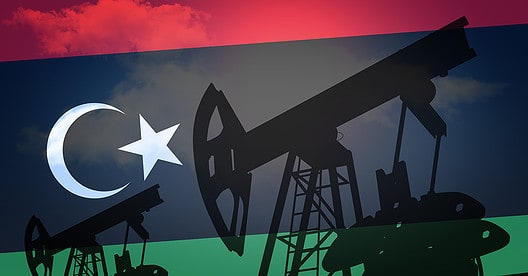Includes historical data for Libya’s Gross Domestic Product growth, debt-to-GDP ratio and more, as well as information on trade, banking and financial sector leadership.
Fractured Politics Restrain Economic Potential
Following years of civil unrest and armed conflict, Libya established the Government of National Unity in 2021 through a UN-led process. Strategically located at the crossroads of Europe, Africa and the Middle East, this country of about 7 million holds Africa’s largest oil reserves and significant gas reserves. Additionally, it boasts very low external debt, surplus accounts, substantial foreign exchange reserves and a $70 billion sovereign wealth fund.
Today, however, Libya remains politically fragmented with multiple centers of power vying for control. Threats from extremist groups and non-state militias further complicate governance. Corruption, a lack of reforms, and inadequate public services and infrastructure pose significant challenges to the country’s transition to a free, modern and diversified market-based economy.
Macroeconomy & Sovereign Data
| Type of Government | Constitutional republic |
|---|---|
| Capital | Tripoli (Tarabulus) |
| Sovereign Ratings |
S&P: Not rated Moody’s: Not rated Fitch: Rating watch |
| Total Population | 6.9 million |
| Median Age | 27.1 |
| Adult Per Capita Income (PPP) | 40,207.62 |
| Total GDP (2023) | 48.2 billion |
Libya GDP & Economic Overview
Most Recent Content
Libya
Banking & Finance
Trade & Investment
| Total Exports | USD 22.0 billion (2023) |
|---|---|
| Leading Exports |
Crude Petroleum Natural Gas Refined Petroleum Scrap Iron Gold |
| Total Imports | USD 40.4 billion (2022) |
| Leading Imports |
Refined Petroleum Cars Broadcasting Equipment Cigarettes Jewelry |
| Source: | World Integrated Trade Solution |
Libya Leading Companies
| Jumhouria Bank | Financials |
|---|---|
| National Commercial Bank | Financials |
| National Oil Corporation | Oil & Gas Exploration & Production |
| Arabian Gulf Oil Company | Oil & Gas Exploration & Production |
| Libyan Iron and Steel Company | Materials, Metals & Mining |
| Libyan Post Telecommunications & Information Technology | Telecommunication Services |
| Arabian Cement Co. | Materials, Building Products |
Major Trade Partners — Import
| China | 16% |
|---|---|
| Türkiye | 13% |
| Italy | 9% |
| United Arab Emirates | 9% |
| Egypt | 5% |
Source: World Integrated Trade Solution
Major Trade Partners — Export
| Italy | 33% |
|---|---|
| China | 23% |
| Spain | 12% |
| France | 5% |
| United Arab Emirates | 4% |
Source: World Integrated Trade Solution
Global Finance Rankings & Awards
Data Sources:
UN World Population Prospects
World Inequality Report
S&P Global Ratings
Moody’s
Fitch Ratings
IMF Direction of Trade Statistics (DOTS)
UN Conference on Trade and Development (UNCTAD)
CIA The World Factbook
World Bank’s World Integrated Trade Solution
Forbes Global 2000






